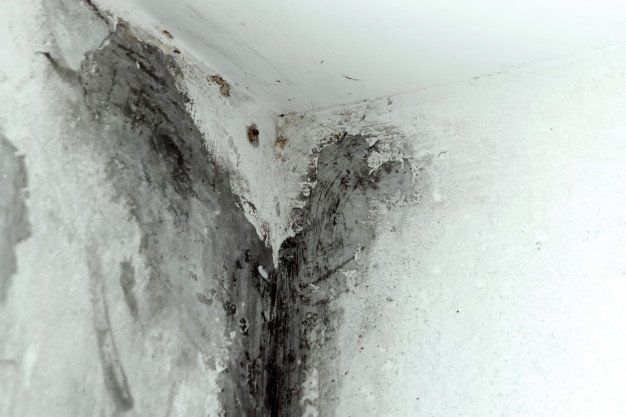Mold Removal and Mitigation in New York City, New York

Stachybotrys chartarum or toxic black mold is a type of microscopic fungus that produces its food in slime form and makes its conidium (reproductive stage) in tiny grain like particles. It can be found in dry soil and paper grains, but the most common mold species is most often found in cellulose-rich construction materials from flood water or wet, damp areas. When molds grow in homes, they tend to build up in attics, crawl spaces, and behind walls and in ceilings. The health problems associated with indoor mold range from mild to severe depending on the amount of exposure to the mold and the person's overall health.
Even if the area you live in is not in an area prone to flooding, you should still get a mold inspection and mold removal near me to check your place. Many times, mold can hide in hideous corners and you won't even know it's there. If you grow too many plants or trees around your property, the mold could grow inside your walls or in the ceilings. Without enough ventilation, the spores from mold can settle inside and start reproducing. Even if there are no visible signs of mold, you might already have a mold problem hiding in your walls and ceilings.

Contact Us
We will get back to you as soon as possible.
Please try again later.
Mold Growth
Mold spores find a wet surface to grow and spread rapidly. Indoor air contains 10 times more moisture than outdoor air, making it a prime breeding ground for mold. Even though mold growth cannot be completely eliminated, you can take steps to reduce the moisture in your home. Eliminating moisture from the air by using dehumidifiers or installing efficient air-conditioning systems can substantially reduce the amount of moisture in the indoor environment. You can also use special mold killing cleaners that are designed to remove mold and mildew.
Mold thrives commonly in humid, damp, and dark indoor environments. Dampness is usually caused by poor ventilation, such as poorly sealed windows or a leaky roof. Other causes of dampness are condensation, which can occur if ceiling fans are turned off and left sitting for long periods, and water damage, such as that caused by leaks in the bathroom or kitchen. Poor insulation also contributes to a lack of ventilation and creates the perfect environment for mold to grow. Excessive humidity is usually caused by outside moisture collecting in the attic, walls, or even windows.
Toxic Black Mold
Toxic black mold can hide in places you might not even be able to see, like in cracks between the foundation and the exterior walls. A mold removal and mitigation expert can check for the presence of dampness, which can indicate the presence of mold - and then fix it. Unfortunately, it's not always easy to tell if your house has been recently flooded. In fact, mold spores might have traveled through the air and settled on the drywall after the flood, waiting to grow and infest your home further.
Mold Problem: What To Do?
If you detect a mold problem in your home, you must take steps to remove it before it gets worse. Mold needs moisture to survive, so the first step is to eliminate the moisture. In the home, you will probably need to purchase mold killing cleaners and air conditioners to remove the mold from the areas that are damp, such as the basement and bathroom. These treatments will typically take one to three days to work. You will, however, want to prevent any new water from building up in the same locations until the mold problem has been completely solved.
After eliminating the source of the moisture, you will need to repair any damages that resulted from the mold growth. In many cases, this means replacing some of the building materials that have been affected by mold. If you are unable to replace all of the damaged building materials, you may be forced to refurbish them, making them safer for mold to grow in. However, you must make sure that you only replace items that have actually been affected by molds. In some situations, it may be necessary to rebuild entire walls or even houses, which means that you will have to again begin the process of drying out the area to prevent new mold from growing.
Even if you are not suffering from an actual mold allergy, mold exposure can still happen. For example, certain types of wood require regular treatment to prevent them from developing a dangerous chemical known as wood rot. It is important to make sure that your home is properly dried and maintained, and if you have any type of asthma, you should speak with your doctor before beginning any kind of mold removal or treatment process. Our mold removal and mitigation near me professional can help ensure the safety of your house and family against the health hazards of mold and we’ll make your property moisture and mold-free.
Explore the diverse range of services we provide, including the installation of
French drains, by visiting our website. Discover how we can meet your needs with our comprehensive solutions tailored to enhance your property's functionality and safety.
More Services We Offer Include:
- Sumps Pumps
- Basements
- Foundation Repair
- Crawl Spaces
- Foundation Cracks
- Roof Waterproofing
- Deck & Porch Waterproofing
- French Drains
- Radon Testing
- Egress Systems
- Reparación e Instalación de Desagües Franceses
©New York City Foundation Repair
917-512-2810
